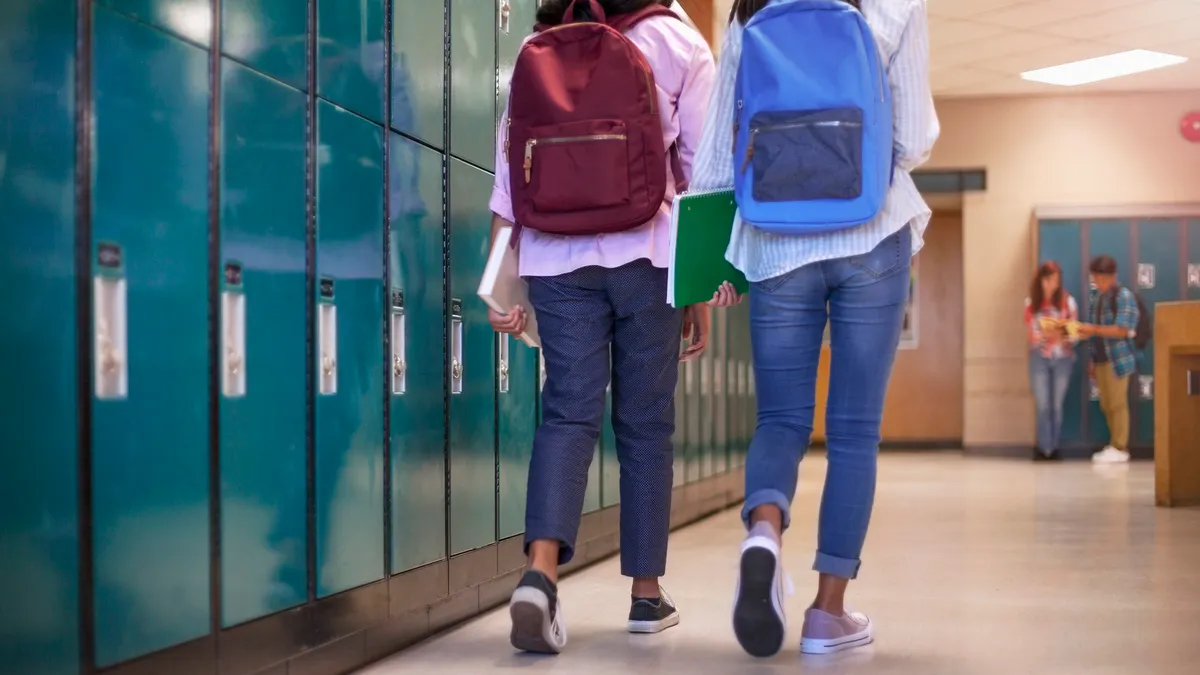Dive Brief:
- Fostering a sense of belonging is crucial to keeping middle schoolers engaged and helping them succeed, but creating this supportive learning environment requires an intentional effort from educators.
- Developmentally, middle schoolers really want someone to connect to, “but they are also trying to break away from their parents,” said Jennifer Ciok, the middle grades network manager of coaching and improvement for the To&Through Project at the University of Chicago. “So for that very confusing time in life, it's really important to have at least one trusted adult at school that they can go to.”
- In her experience, Ciok said, open communication and intentional relationship building can help foster that sense of belonging that leads to increased attendance, higher GPAs and long-term success rates.
Dive Insight:
Although it might sound simple, talking to students is one of the most important areas for educators to focus on, said Ciok, also the author of “In The Meaningful Middle School Classroom: How to Spark Engagement That Fosters Deep Learning.”
She said educators often spend a lot of time looking at data, and while that can help identify which students are struggling, a more effective approach is to share this data with students and let them participate in the conversation.
“We know all these things like which students feel connected and which don’t, but we never actually speak to them, and we never ask why,” said Ciok. “You have all this data in front of you. Now, go back and ask students what it means.”
Some formalized ways to do this include focus groups, where educators can speak to a group of students who share similar experiences. If it's one student who may be a cause for concern, then a one-on-one conversation might be more effective.
Ciok noted that many of these concepts, like connection and impact, can mean different things to different students, so it's important to hear from them directly.
Through questions like “What was an assignment that was meaningful to you?” or “What does respect look like to you?” teachers can learn what students need or would like to see, and they can begin to incorporate student responses into their classrooms.
“Try not to make this so hard on yourself. You don't have to figure it all out. Talk to your kids. They want to share,” Ciok said.
However, when discussing these findings and data with students, Ciok warns against presenting this information as accusatory.
“You have to come in as questioning, and very much like, ‘I am working on this thing. I need your help. I want to do better,’” she said.
Ciok added that it's not just about fostering that connection in an individual classroom, but also about assessing whether students are experiencing that connection elsewhere. For this, she recommends relationship mapping, an activity where students share which educators they feel connected to and educators share which students they feel connected to.
In “mapping” these links, middle school teachers can find which mutual connections to continue fostering, while misalignments can indicate which relationships to work on.
However, Ciok advises against trying to force a connection. It is unrealistic to be “everyone’s person,” she said, so instead try to connect with whoever a student’s trusted adult might be. With that preexisting relationship, the other educator can be an excellent resource for best serving that student.
Ciok also recommends that administrators work on creating connections with teachers and ensuring they have someone they trust on campus.
“Teachers need to know someone cares, right? That is just as important for staff as it is for students,” Ciok said. “If teachers don't feel that, students won't feel that.”













